
The Qantas Group recently placed a huge order with Airbus that will see up to 311 new aircraft delivered to the company over the next decade. Of those, just 12 planes will be twin-aisle aircraft.
It follows a broader trend in the aviation industry as many airlines replace wide-body aircraft like Boeing 767s, previously used for medium and long-haul flights, with narrow-body jets like the Airbus A321XLR.
Qantas’ fleet plans for the next decade
The mainline Qantas fleet (excluding QantasLink) currently consists of the following aircraft:
- 10x Airbus A380s (including 4 yet to return to service following the pandemic)
- 11x Boeing 787-9s (plus 3 more aircraft due for delivery within the next few months)
- 10x Airbus A330-300s
- 15x Airbus A330-200s
- 75x Boeing 737-800s

There are also Boeing 717s, Bombardier Dash 8s, Embraer E190s, Airbus A320s and Fokker 100 jets operating for various Australian regional airlines under the QantasLink brand.
Meanwhile, Jetstar (also part of the Qantas Group) currently has the following aircraft in its fleet:
- 10x Boeing 787-8s
- 4x A321neo LRs (with a further 14 on order)
- 6x Airbus A321s
- 55x Airbus A320s
Over the next decade, aircraft that the Qantas Group has on order include:
- 12x Airbus A350-100s to be used for Project Sunrise flights
- 20x Airbus A321XLRs for Qantas
- 20x Airbus A321XLRs for Jetstar
- 20x Airbus A220-300s (regional jets which will go to QantasLink to replace the 717s/E190s)
- An additional 94 aircraft purchase rights for A220 and A320 family aircraft for Qantas
- A further 71 Airbus A321 family purchase rights for Jetstar
It’s likely the airline will order more aircraft in the coming years, including more wide-bodies. But that’s what’s currently on order.
Not enough wide-bodies ordered yet to replace the current fleet
Some of the new aircraft Qantas has on order will be used to replace the 75 single-aisle Boeing 737-800s – the oldest of which is now over 21 years old. But there certainly aren’t enough wide-body aircraft coming to replace Qantas’ 35 Airbus A380s and A330s on a like-for-like basis.

The twelve Airbus A350-1000s on order will be used for Project Sunrise routes like Sydney-London, Melbourne-London, Perth-London and Sydney-New York. They could also be used for new routes like Sydney-Paris, Sydney-Frankfurt or even Sydney-Sao Paulo.
But these new wide-body aircraft aren’t fully going to replace the A380s on routes like Sydney-Los Angeles or Sydney-Singapore-London, which Qantas has said will continue operating alongside the non-stop Sydney-London route. Even if the A350s did take over all current A380 routes, they only have half as many seats.
The small A350 fleet also won’t be sufficient to replace the 25 Qantas Airbus A330s that will retire within the next decade or so.
One possibility is that Jetstar could transfer its Boeing 787-8s to Qantas as a replacement for some of the Airbus A330s. Either way, the number of wide-body jets in the Qantas and Jetstar fleets will be much smaller in a decade.
Unless the Qantas Group orders more wide-body jets – or significantly slashes its international route network – this inevitably means more medium-haul and long-haul routes will be operated by narrow-body planes.
We’re already seeing the start of this now, with Jetstar recently switching some of its Melbourne-Bali flights from Boeing 787s to Airbus A321LRs.

Many airlines now flying narrow-body jets further, for longer
Australia’s other major airline, Virgin Australia, no longer has any wide-body aircraft in its fleet. So, when Virgin launches non-stop flights from Cairns to Tokyo in a few months, it’ll be using Boeing 737 MAX aircraft.
Overseas, many other airlines have also been reducing their wide-body fleets in favour of Airbus A321neo LR and XLR jets. These aircraft are significantly more fuel-efficient than aircraft like the Boeing 757, Boeing 767 or Airbus A340, with lower unit (per-seat) operating costs. They also allow airlines to move away from traditional the “hub and spoke” model for long-haul flying, in favour of non-stop service on “thinner” routes or more frequent service on existing routes.
For example, Philippine Airlines now uses Airbus A321neos from Brisbane to Manila and will soon use these to launch direct Perth-Manila flights. And Air Astana is using them on routes like Bangkok-Almaty. All of these flights take around seven hours.

In June, Jetstar will launch twice-weekly Sydney-Rarotonga flights using Jetstar A321neo LRs. This route was previously served only once per week by Air New Zealand using wide-body Boeing 767s, 787s and 777s.
Long-range Airbus A321s have become very popular on thin trans-Atlantic routes
Before the A321LR entered the market, airlines predominantly used ageing, fuel-guzzling Boeing 757s to serve trans-Atlantic routes without sufficient demand for a wide-body service… or they didn’t service the routes at all.
There were a few other short, niche trans-Atlantic routes that used Boeing 737s, like the St John’s-Dublin service on WestJet.
British Airways also managed to fly an Airbus A318 from New York to London for many years. But that aircraft was configured with just 32 Business Class seats as a fully-loaded A318 wouldn’t have the range. Even so, flight BA1 had to make a refuelling stop in Shannon, Ireland when flying westbound.
Now, airlines like JetBlue, Aer Lingus, La Compagnie and TAP Air Portugal are flying Airbus A321LRs on dozens of trans-Atlantic routes like Lisbon-Montreal and Dublin-Washington. TAP is even flying A321LRs from Portugal to certain destinations in Brazil, such as Belem.

SAS will also soon launch non-stop A321LR flights from Gothenburg and Aalborg to New York – two routes that would not have been economical enough to run using larger planes.
“We see a demand from secondary cities and are delighted to connect even more parts of the world. The Airbus A321 Long Range is a slightly smaller long-distance aircraft and perfect in size for servicing the regional markets,” SAS’s head of Network and Revenue management Erik Westman said of the new routes with westbound block times of around nine hours.

United Airlines has 50 A321XLRs on order, which it will use to fly from the United States to Europe and South America.
Qantas will likely fly A321XLRs to Asia
You can see where this is all going…
Currently, the Qantas’ flights to Asia are all operated by wide-body aircraft (except to Denpasar, Port Moresby and Dili). But when the Airbus A330s start to be retired, it’s inevitable that some of the “shorter” routes to Asia will start to be serviced with Airbus A321XLRs.
In fact, Qantas specifically alluded to this last year when it pointed out that the A321XLR “can fly approximately 3,000km further than the 737 (at 8,700km) and opens up a wider range of direct domestic and short haul international routes (e.g. South East Asia, Pacific islands).”
It’s also no coincidence that Qantas has published maps highlighting the range of the A321XLR, with key destinations in Asia (and the Pacific) shown on the map.

Will Qantas continue to fly wide-body aircraft to long-haul destinations in Asia and beyond? Absolutely!
But these will likely be supplemented by more and more narrow-body services. And that’s not necessarily bad news if it means Qantas can operate more routes, including some like Adelaide-Singapore or Melbourne-Kuala Lumpur that currently see no Qantas service at all.
Passenger comfort on long-haul, narrow-body flights
Unfortunately, Qantas probably won’t install lie-flat Business Class seats on its first tranche of A321XLRs which are due to arrive from late 2024. But these will probably just be used for domestic and short-haul international flights that don’t require them.
It’s quite possible that Qantas’ later A321XLR deliveries may indeed offer lie-flat beds in Business and a bit more legroom in Economy.
This will be needed if Qantas wants to compete with other full-service airlines on medium-haul international routes. Many carriers including Singapore Airlines have already installed lie-flat Business seats on their Boeing 737 MAX and A321LR aircraft.

Many passengers prefer wide-body aircraft for long-haul flights. They’re usually more spacious, with more room to walk around and easier access to the bathrooms and galleys. Due to the wider airframe, airlines also have the space to be a bit more creative with their premium cabin seating layouts.
But the new lie-flat Business products installed on many Boeing 737 MAX and A321LR planes is pretty good. Even in Economy, passengers are slowly getting more used to flying for longer amounts of time on smaller aircraft.

Ultimately, passengers will probably just need to get used to flying longer on narrow-body planes. As nice as jumbo jets like the Boeing 747 or Airbus A380 are for passengers, they aren’t the way of the future…
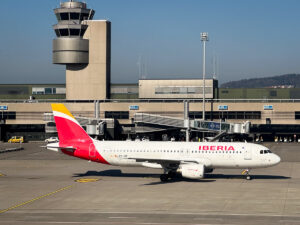
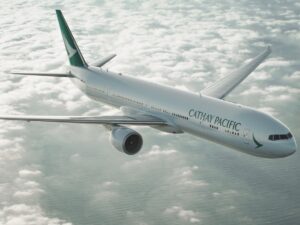

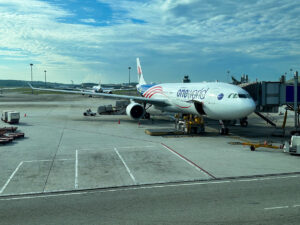
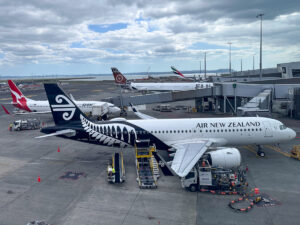


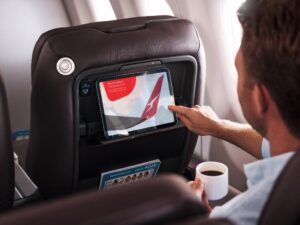
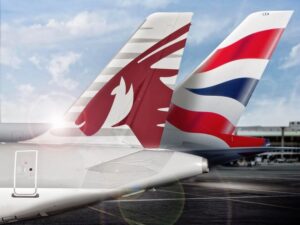



















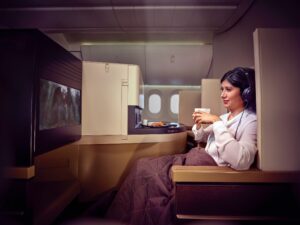







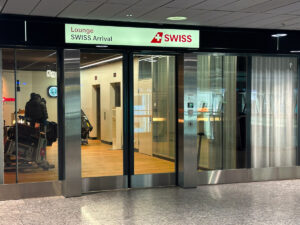
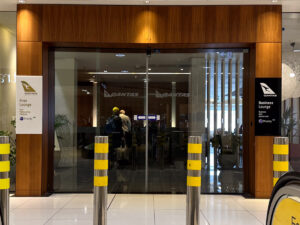



































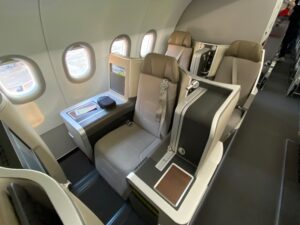







Community Comments
Loading new replies...
Join the full discussion at the Australian Frequent Flyer →